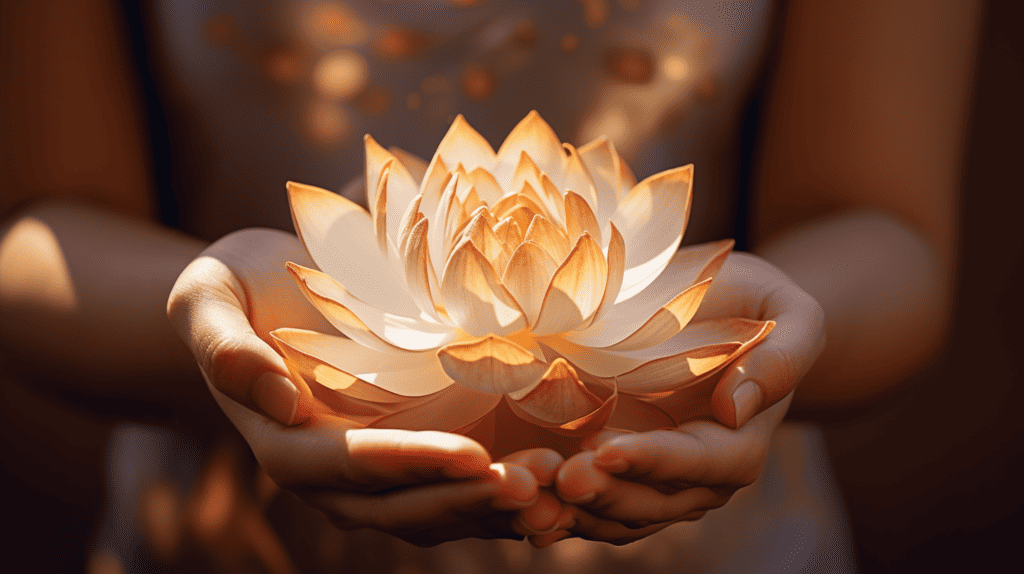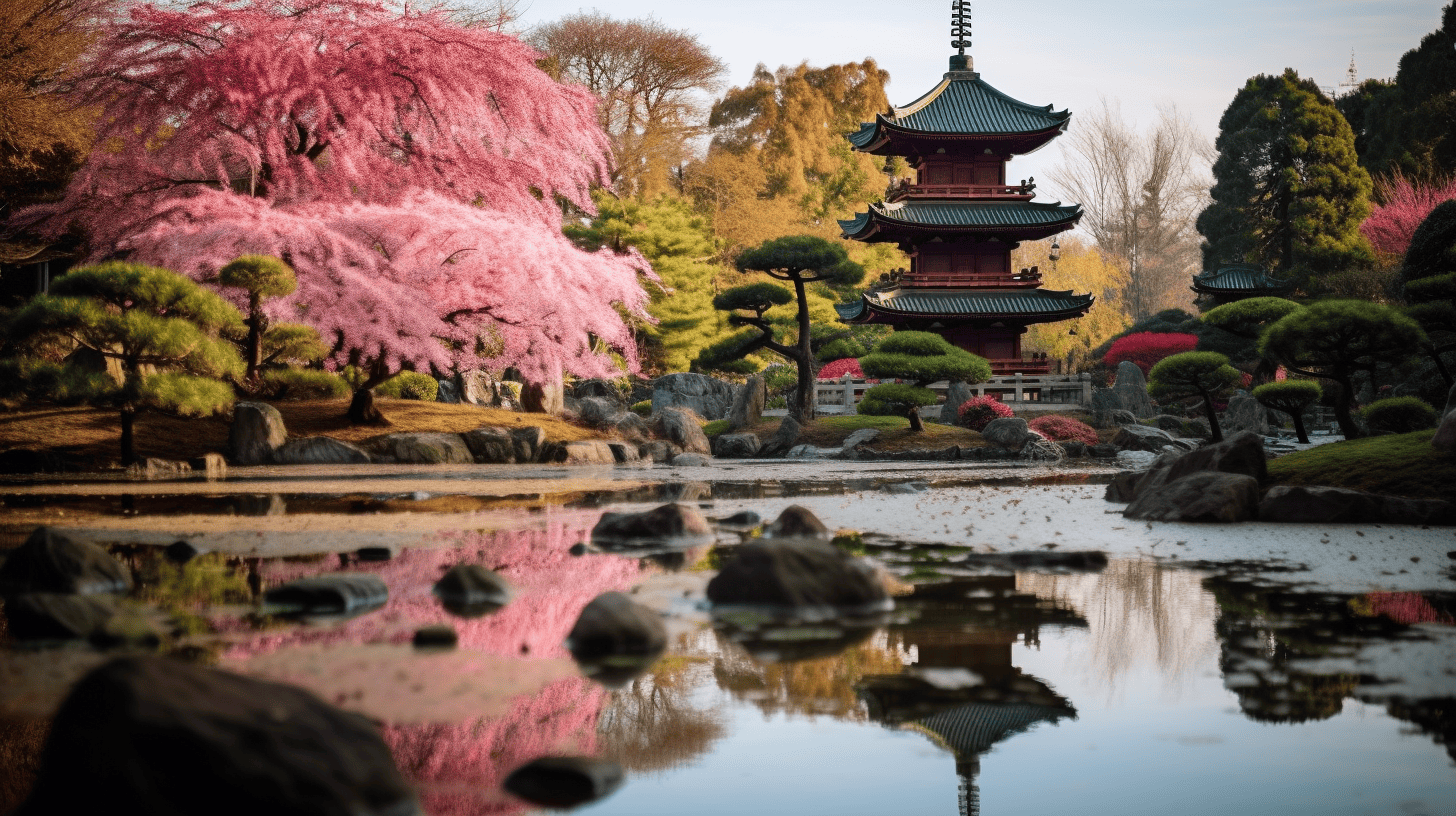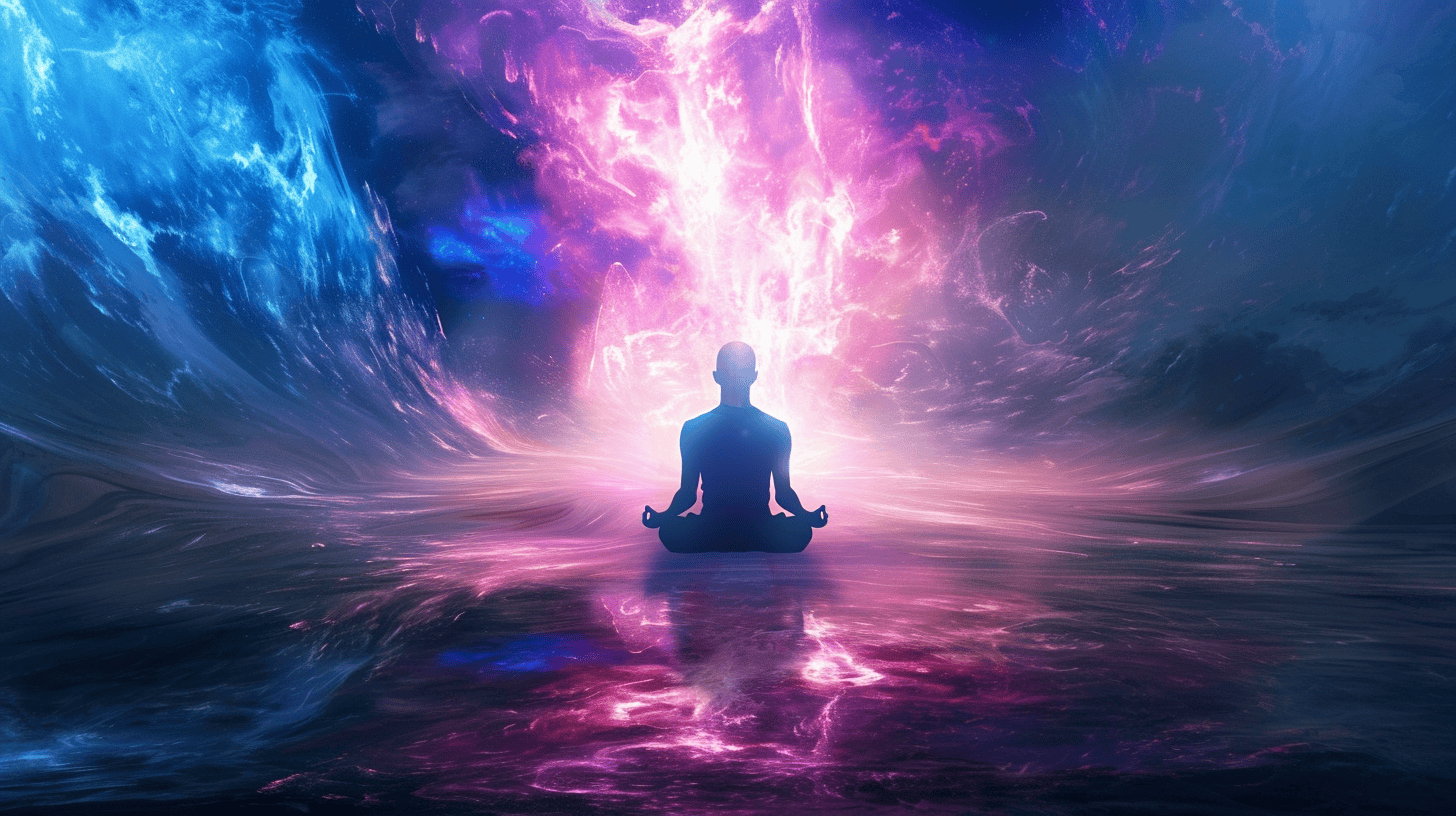As I began exploring different types of meditation, one Japanese word kept popping up in my research – Shikantaza. Shikantaza is a Zen Buddhist meditation that emphasizes ‘just sitting’ without any goals or methods. The name Shikantaza means ‘nothing but precisely sitting.’
At first, this concept seemed confusing to me. Wasn’t meditation supposed to involve some technique for calming the mind? How could just sitting without doing anything lead to spiritual growth? The curious part of me was fascinated to try Shikantaza and discover what this practice was all about.
In this article, I’ll share my experiences learning Shikantaza meditation as a beginner. We’ll cover:
- The purpose behind this uncomplicated practice
- How it differs from more structured meditation styles
- Tips for posture, breathing, and attitude
- Everyday psychological experiences that can arise
- Integrating the spirit of Shikantaza into daily living
- And more about this zen practice of ‘just sitting.’
Whether you’re entirely new to meditation or have experience with other contemplative practices, I hope these reflections provide an insightful glimpse into Shikantaza from a beginner’s perspective. Let’s dive in!
The Paradoxical Purpose of Simply Sitting
When I first heard that the sole aim of Shikantaza was to sit, it seemed almost too basic to be true. Don’t we meditate to calm our minds or gain insight?
It turns out the non-striving attitude of Shikantaza is quite profound in its simplicity. The purpose is to be fully present and experience things exactly as they are in each moment. Shikantaza invites us to ‘just sit’ and allow the mind to become reflective like a mirror without getting caught up in judgments, expectations, or elaborate thinking.
This letting go of control and goals paradoxically leads to inner calm and insight into the nature of reality. By not trying to accomplish or change anything, meditation becomes an exercise in being rather than doing.
Tricycle explains that in Shikantaza Zazen, accepting your practice as it is, good or bad, is crucial, recognizing that like the weather, it can be clear and open or cloudy and stormy.
In my beginner’s Shikantaza sessions, I noticed an interesting phenomenon. When I stopped trying to control my meditation and relaxed into just sitting, I felt more focused and at peace than when aggressively chasing a calmer state of mind.
According to Zen teacher Chozen Bays, ” Shikantaza is not meditation practice that will lead to some goal, but the expression of the goal itself.”
The process of Shikantaza is the destination. By fully engaging in the sitting experience without striving for a particular result, we begin to taste awakening in each moment.
TIP: Approach Shikantaza without preconceived ideas of what “should” happen. Let go of goals and agendas to experience the practice on its own terms.
How Shikantaza Differs from Other Forms of Meditation
Before exploring Shikantaza, I studied techniques like breathing and mantra meditation. I was accustomed to practices that gave my mind something specific to anchor onto.
Shikantaza defied my expectations by inviting me to sit with no object of focus. Instead of concentrating on the breath, a chant, or a visualized image, attention is kept broad and open.
This objectless meditation style of Shikantaza diverges from:
- Focused attention on a chosen object like the breath
- Concentrative single-pointed meditation
- Analytical techniques involving mental reflection
- Visualization methods using creative imagery
- Chanting mantras or praying
Rather than narrowing sensory input like other forms of meditation, Shikantaza broadly opens the window of awareness to let everything in. Phenomena can rise, dwell, and pass without latching on or pushing away.
At first, I found it challenging not to grasp at thoughts and sensations popping up in my mind. The Zen encouragement to “think not-thinking” confused me. Was I supposed to block out everything or engage with it?
I realized this cryptic instruction reminds us not to analyze what arises during sitting but not to suppress it. Thoughts and feelings are welcomed yet not elaborated on.
Shikantaza Across Buddhist Traditions

As I learned more about Shikantaza, I discovered this style of open awareness meditation has been approached differently throughout various Buddhist traditions over the centuries.
While the core principles are the same, there are nuances in how the practice is taught and emphasized:
Shikantaza in Soto Zen
- Shikantaza is most strongly associated with Soto Zen, the tradition I have been studying.
- Soto was founded by the seminal Japanese Zen master Eihei Dogen in the 13th century, who stressed Shikantaza as the essence of zazen practice.
- For Dogen, Shikantaza was not a mere beginner’s practice but the fullest expression of meditation and enlightenment.
- He saw Shikantaza as the way for everyone at all levels to realize their Buddha nature simply by ‘just sitting.’
- Soto Zen centers worldwide carry Dogen’s Shikantaza teachings as a precise yet open-ended practice.
- Shikantaza is practiced during retreats at my local Soto Zen center here, along with shorter periods of sitting mixed with walking meditation.
Shikantaza in Rinzai Zen
- In contrast to Soto, Shikantaza has a less central role in the Rinzai school of Zen.
- Rinzai emphasizes koan contemplation and dialogues with a Zen teacher pointing to one’s true nature.
- While open awareness is still cultivated in Rinzai, more methods and structures exist around the sitting meditation.
- Shikantaza, or ‘just sitting,’ is a foundational practice but not the main event.
- The classic Rinzai approach stresses harnessing mental energy and insight to penetrate koans.
Shikantaza in Tibetan Buddhism
- Tibetan Buddhist styles of meditation tend to be more structured than open-ended Shikantaza.
- Theravada and Mahayana traditions have similarities in the vipassana or insight meditation.
- However, Shikantaza, as practiced in Zen, is less prominent in Vajrayana branches.
- Tibetan practices focus more on Samatha techniques that cultivate concentration and visualizations.
- Dzogchen’s meditation resonates with Shikantaza ‘s, allowing whatever arises to self-liberate.
- But on the whole, Shikantaza, as Zen’s objectless, goalless sitting practice, differs from Tibetan styles.
Understanding these nuances helped contextualize the variations in how Shikantaza is positioned and practiced across wisdom traditions. While the essential spirit may be universal, the forms manifest distinct flavors.
Posture and Breathing: Sitting Like a Mountain

To prepare for my initial Shikantaza sits, I sought advice on proper posture and breathing. Good posture helps cultivate alertness that is balanced with relaxation.
The basic Shikantaza posture involves:
- Sitting upright without being rigid
- Letting the back find its natural alignment
- Hands folded gently in the lap or resting on the thighs
- Shoulders dropped to release tension
- Chin tucked slightly to straighten the spine
- Eyes open, gazing softly downward at a 45-degree angle
This upright, dignified posture creates a mind-body sense of being rooted yet unruffled, like a mountain. Slouching invites drowsiness while being too tense activates restlessness.
I was reminded to check and reset my posture several times during each sitting session. Adjusting my spine and neck each time helped me stay present.
For beginners like myself, sitting on a cushion or chair is recommended if sitting directly on the floor is uncomfortable. Choose a stable position that lets the body be alert yet at ease.
Buddhism Guide describes Shikantaza as a “method of no method,” emphasizing the use of pure consciousness or mindfulness to transcend the thinking mind.
Allow breathing to flow naturally without attempting to control it. Inhales and exhales continue on their own, like waves in the ocean. Avoid intentionally lengthening or emphasizing the breath.
TIP: Find a posture that is uplifting but not tiring. Imagine the effortless vitality of a mountain. Adjust when needed, but don’t fidget.
Cultivating Open Awareness Without Fixation
Once seated, I encountered a common beginner difficulty – if I wasn’t supposed to focus on anything, where would I direct my attention?
The initial instructions I received were to be present with a spacious, choiceless awareness of what is occurring in the present moment. Rather than spotlighting a narrow aspect of sensory experience like the breath, attention rests upon the broad landscape of sensations, thoughts, and feelings appearing on their own.
Attention might alight here and there, yet fixates nowhere. It does not linger anywhere but continues circulating freely. Thoughts come, and thoughts go, passing clouds never obscuring the open sky of awareness.
I was instructed not to follow or block anything entering the mind intentionally but to let it all be. There was no need to dwell on any particular sensations or make myself stop thinking – whatever arose could self-liberate if not grasped.
TIP: Don’t strain to suppress thinking or monitor your mind. Relax and allow the contents of awareness to move fluidly like leaves in a stream.
This non-judging acceptance of whatever unfolds in the mind may initially seem passive but paradoxically cultivates penetrating insight. We penetrate beyond surface appearances and conceptualizations by relaxing into things as they are.
Working with Thoughts and Emotions – From Struggle to Acceptance

I never realized how constantly my mind jumps from thought to thought until sitting Shikantaza! When I tried to clear my mind by force, it just made more thoughts pop up. I had to learn to relate to my thinking differently.
At first, I struggled with feelings of irritation and failure when thoughts inevitably arose during sitting. I judged myself for not being able to keep my mind blank.
Thankfully, my teachers gently reminded me not to disparage myself or get caught battling my thinking. There was nothing wrong with thoughts appearing – struggling with them was the real issue.
Learning non-resistance allowed me to make peace with my busy mind. When thoughts arose, instead of fighting them, I would gently acknowledge their presence, then let them fade away like passing cars outside my window.
According to Daily Zen, Zazen can be broken down into three phases: adjusting the body, the breathing, and the mind, with the third phase, adjusting the mind, being quite distinct in Shikantaza compared to koan Zen.
A beginner’s mind is eager to immediately master techniques like clearing the mind completely. But Shikantaza cannot be forced. Accepting the continuous arising of thoughts is part of settling into transformative awareness.
TIP: Don’t expect thoughts to instantly stop while sitting. Their appearance is natural. Practice patience and self-compassion when the mind wanders.
As I continued sitting, my thoughts slowed down and divided into peaceful gaps of silence. I let them transform my frustration into patient curiosity about how consciousness works.
Working with emotions that arose during sitting required the same non-judgmental receptivity. Anger, boredom, anxiety, or sadness were welcomed as transient visitors, acknowledged without exaggeration or suppression before drifting away.
Finding the Balance Between Effort and Ease
Knowing how much effort to apply during Shikantaza initially perplexed me—too much effort created tension, while too little slipped into dullness. I had to discover a middle way between these extremes.
Physical effort is used to maintain an uplifted posture, eyes open, and natural breathing – relaxed yet attentive. Mental effort means sustaining present-moment awareness from moment to moment. This effort is balanced with the ease of releasing control.
The right amount of effort nourishes alertness without compulsion. Gentle effort applied consistently builds momentum to carry the mind into deeper states of meditative focus. Too much effort creates agitation, and too little causes dullness or distraction.
TIP: Imagine effort and ease as the two wings of a bird – both are needed to fly straight and balanced. Adjust your effort level to avoid collapsing or straining.
My teachers advised me to notice whenever my energy was off-kilter between sleepiness and over-excitement and to adjust my effort to guide it back to the center.
Learning this dance between effort and ease brought my Shikantaza practice to life. I began to sense the vital precision behind the Zen saying, “Not too tight, not too loose.”
How Long Should Each Shikantaza Session Last?

As I began a regular Shikantaza practice, one practical question arose: How long should I sit each time? Would 20 minutes be enough, or do I need to work up to an hour or more?
For beginners, most teachers recommend starting with 15-25 minutes and gradually increasing from there. Maintaining a daily practice consistently for short periods is better than sitting sporadically for long stretches.
The duration depends on your level of experience and engagement. If attention starts wandering uncontrollably before the time is up, it may be better to shorten the session. It is typical for attention to waver between focused and scattered, so don’t get discouraged. Consistency strengthens concentration incrementally.
During daily 25-minute sits, I noticed natural shifts through several stages:
- Initial settling of the mind when first sitting down
- Periods of stable attention on a calmer mind
- Moments when focus wandered
- Renewed effort to regather attention
- Deepening awareness toward the end
I learned not to judge my sits based on fleeting moments of distraction but on whether the effort was made to return to the present moment and focus each time gently.
TIP: Start with 20-30 minutes maximum to avoid overload. Gradually increase sit times as concentration develops. Remember duration is less important than regularity.
As I approached Shikantaza with a patient, persistent attitude, any expectations about my sessions needing to last a certain length of time naturally dissolved.
Common Challenges Faced by Shikantaza Beginners
Starting a Shikantaza practice confronted me with some typical obstacles faced by most first-time meditators. Knowing these challenges are a normal part of the process helped me develop self-compassion. Difficulties I encountered included:
Physical discomfort – Sitting still in one position for more extended periods took somebody acclimation before becoming more comfortable. Minor aches would distract my attention.
Restlessness – Sitting with no anchor sometimes stirred up energies that made it hard to remain still. My mind also jumped more frantically when bored.
Drowsiness – Early morning sits were accompanied by grogginess, especially before having tea or coffee. Allowing the eyes to close even briefly often led to nodding off.
Discouragement – Some sessions felt mentally scattered, with attention lost in thought loops. Self-judgment about “failed” sits arose at times.
Impatience – I occasionally pushed for spiritual insights or final realization instead of accepting the gradual process of training attention.
With gentle guidance from my teachers, I recognized these experiences as everyday temporary phenomena to be accepted with equanimity. Bringing patient curiosity helped me persist without harsh self-criticism.
TIP: Be compassionate with yourself as challenges arise during sitting. Don’t amplify passing difficulties into permanent failings. Stay centred.
I realized that my attitude toward obstacles mattered most, not whether they appeared. Each sit became an opportunity to train equanimity.
Calming the Mind Through Non-Judgmental Awareness
As I practiced Shikantaza over my first few months, I noticed gradual changes in my psychological relationship with sitting. Resistance and frustration diminished as I allowed things to be as they were momentary. Attempts to force a calmer mind gave way to trusting the process.
Thoughts that initially barrage the mind slowly start to unravel as we cease adding mental commentary and value judgments on top of sensory experiences passing through awareness. Like choppy seas settling as winds die down, mental agitation smooths into tranquility by disengaging our habitual thought patterns.
By cultivating choiceless awareness beyond the discriminating, conceptualizing intellect, Shikantaza melts our conditioning about reality. Things are freed to be just as they are, reflected impartially like a mirror.
As a beginner, I noticed this calming process occurred closely with slowing down and resting in the present moment rather than chasing future fantasies or ruminating on the past. Allowing things to unfold here and now without wanting them differently unraveled the engine of agitation.
TIP: Don’t expect thoughts to instantly disappear during sitting. Be patient as your mind calms down gradually through sustained, non-judgemental attention.
Glimpsing Non-Duality and No-Self Through Shikantaza
While Shikantaza is not a fast track to enlightenment, sincere practice over time can uncover fascinating insights into the nature of self and reality. Gently persevering began to empty my mind of discriminating thought patterns, revealing a fresh, nondual perspective.
As labeling and analyzing thoughts subsided, the solid divisions in my usual thinking revealed themselves to be transparent and interdependent. Subject and object emerged as conceptual constructs convenient for navigating the conventional world but ultimately insubstantial.
When my dualistic perception is relaxed, the boundaries between myself and the surrounding phenomena soften. The immediacy of sensory experiences blossoming in each moment, rather than the mental narrative about events, came to the forefront.
This dissolving of the subject-object division led me, at times, to taste the Zen notion of “no self” or non-separation. The small, discrete self-concept my mind had fabricated was exposed as illusory. In its place was the intimate connection with the vibrant fabric of sensations unfolding freshly each instant.
While such glimpses were fleeting at first, Shikantaza provided a doorway into more holistic ways of seeing the world, whereby nothing is excluded from our awareness. Duality gave way to interbeing.
TIP: Let go of judgments and ideas separating “self” and “other”. Open to the possibility of a fluid, nondual awareness accessible through Shikantaza .
Integrating Shikantaza ‘s Spirit into Daily Life
A common question that arose for me as a Shikantaza beginner was how to carry over its essence into the other moments of my day not spent on the cushion. Meditation aims to enrich our non-meditation time.
I discovered several ways I could nurture the Shikantaza attitude amid my everyday routine:
- Frequently renewing present-moment awareness – recalling myself to the here and now rather than drifting in thoughts about the past or future.
- Noticing when I was hurrying on autopilot and intentionally slowing down.
- Consciously relaxing tension and agitation as I wait in lines or sit in traffic.
- I tune into sensations in my body during everyday activities like walking, eating, and brushing my teeth.
- Allowing things around me to be as they are instead of wishing them to be different.
- Meeting pleasant and unpleasant moments with calmness rather than attachment or aversion.
- Letting thoughts and emotions arise and pass without fueling them.
- Watching judgments about others or myself without solidifying those views.
TIP: Set reminders to pause frequently during your day. Check in with your body and surroundings to refresh awareness.
While not always possible, carrying the relaxed yet attentive presence cultivated in Shikantaza into other parts of my life allowed meditation to permeate ordinary experiences. Each moment became an opportunity just to be.
Conclusion from Exploring Shikantaza as a Beginner
Reflecting on my first months practicing Shikantaza, here are some key insights I’ve gained:
- The simplicity of Shikantaza belies a profound capacity to calm and awaken the mind when practiced with patience.
- Paradoxically, not controlling the mind or trying to alter thoughts allows natural tranquility to emerge.
- Equanimity in facing challenges and discomfort leads to profound trust in the sitting process.
- Gentle effort balanced with relaxation sustains alertness without tension.
- Our relationship and attitude toward distracting thoughts matter more than their presence.
- Patience and self-compassion are essential foundations for sustaining a regular sitting practice.
- Consistent daily sits of even short durations are more transformative than long, irregular sits.
- Non-attachment, non-judgment, and non-separation offer new ways of seeing the self and world.
- Integrating Shikantaza ‘s spirit of mindful presence throughout daily living is vital.





Leave a Reply